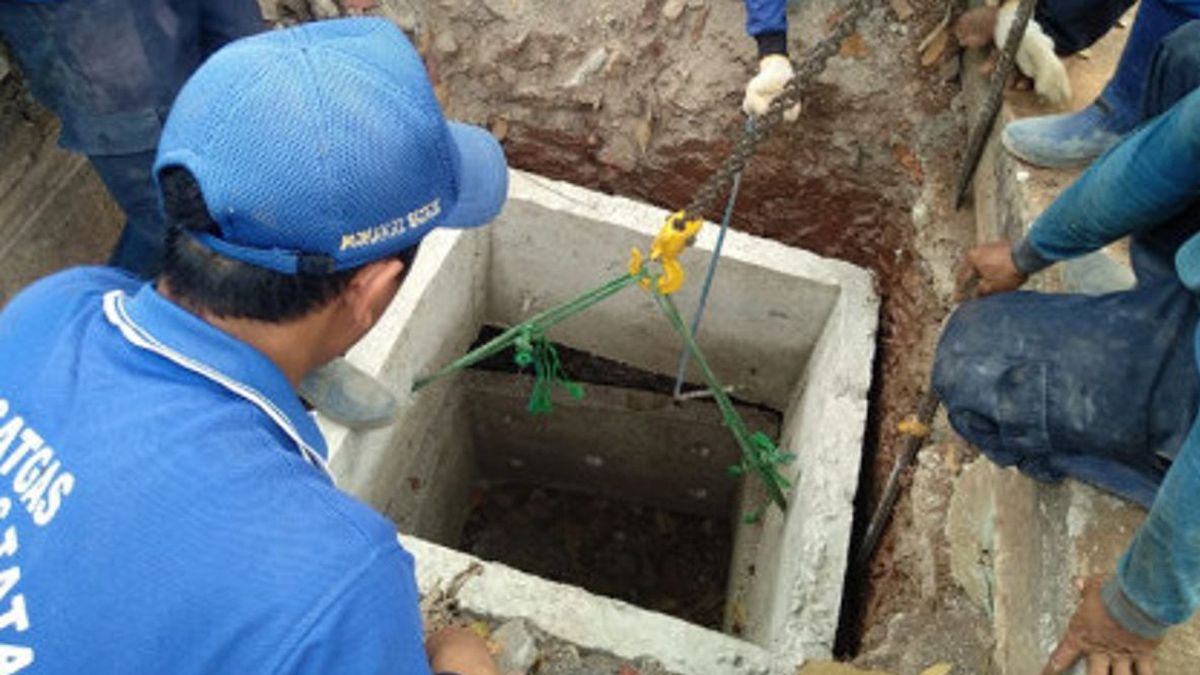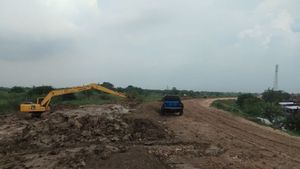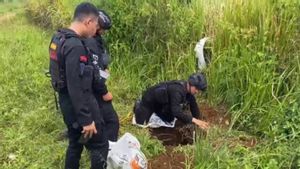
JAKARTA - The DKI Provincial Government has a continuation target of constructing 300 thousand vertical drainages or infiltration wells this year until 2022. The budget is IDR 400 billion, taken from the 2021 DKI Regional Budget.
So far, the construction of infiltration wells has mostly been in the offices of the DKI Provincial Government, the regional work units (SKPD), to public spaces such as parks and RPTRA.
The DKI Provincial Government hopes that residents will also help make infiltration wells in their respective homes. For those interested in making infiltration wells, there are guidelines in the Governor of DKI Regulation Number 20 of 2013 concerning infiltration wells.
This Pergub was made to cover the law of making infiltration wells in an effort to accommodate, store and absorb rainwater which can increase soil content.
In Pergub 20/2022, it is explained that infiltration wells are artificial infiltration systems that can accommodate and absorb water into the ground from rainwater or water from ablution, condeser, or other wastewater, which can be in the form of wells, ponds, channels, or infiltration field.
Infiltration wells are made based on the fact that the number of building constructions is increasing. The increasing number of buildings can reduce the infiltration of rainwater into the soil and the volume of aquifers that can cause flooding and drought.
Following are the requirements for making infiltration wells:
1. Infiltration wells must be constructed within the building area concerned
2. The drainage channel leading to the infiltration well is separated from the sewage channel
3. Infiltration wells must be built in a location where the soil structure is stable and not steep
4. Infiltration wells must be made at least 5 meters away from the location of landfills, septic tanks, or soil containing pollutants.
5. Construction of infiltration wells must consider the safety of the building at least 1 meter from the foundation
6. Infiltration wells should not be placed under the basement
7. The depth of the groundwater level is at least 1.5 meters when it rains
8. Infiltration wells must be in an open space, the bottom of the pond must not be made waterproof, and the depth of the infiltration pond is at least 1 meter from the ground
The DKI Regional Disaster Management Agency explained how to construct infiltration wells. Here are the steps:
1. Make a cylindrical hole in the ground with a diameter of 10 to 15 centimeters and a depth of 100 to 120 meters. However, do not exceed the groundwater level. The holes can be made with bamboo, iron pipes or soil drills with a distance of 50-100 centimeters between the holes.
2. The hole is filled with organic waste. Soil fauna such as worms will come naturally and enter the hole to seek shelter and food.
3. Compost that is formed in the biopore infiltration hole can be taken to fertilize plants
4. The mouth or base of the hole is surrounded by mortar with a width of 2 to 3 centimeters so that the soil does not fall into the hole
5. The number of biopore infiltration holes is determined based on the area of land. For example, for each 50 square meter land area, 10 holes are made, 20 holes for 50 to 100 meters are made, and so on
6. The infiltration hole can be made by yourself with a ground drill or by a well drill
The English, Chinese, Japanese, Arabic, and French versions are automatically generated by the AI. So there may still be inaccuracies in translating, please always see Indonesian as our main language. (system supported by DigitalSiber.id)












